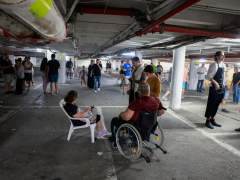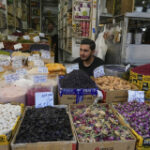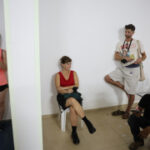Tel Aviv, Israel – For the fourth night in a row, missiles have hit Israeli cities. Iran’s retaliatory strikes, triggered by Israeli attacks, saw people sheltering in stairwells and bomb shelters as the scale of the damage and Iranian rockets managing to penetrate one of the world’s most sophisticated defence systems have left many reeling.
On Friday, Israel began its assault on Iran, targeting military and nuclear facilities and killing high-profile security, intelligence and military commanders as well as scientists. Israel’s attacks, which have also targeted residential areas, have killed more than 224 people and wounded at least 1,481, according to Iranian authorities. The government said most of those killed and wounded have been civilians.
In response, Iran has fired barrages of missiles towards Tel Aviv and other Israeli cities.
Hundreds of Iranian missiles have been launched since Friday, and Israel’s air defence systems, though robust, have been unable to stop all of them. While the number of missiles fired by Iran appears to have gone down on a night-by-night basis, the scale of the attacks continues to be unprecedented for Israelis.
Central Tel Aviv, Haifa, the scientific hub of Rehovot and homes have been struck. At least 24 people in Israel have been killed in the strikes and hundreds wounded.
The Weizmann Institute of Science in Rehovot, a source of national pride and a cornerstone of Israeli military research, was among the hardest hit. Its laboratories were torn open, glass panes shattered, and cables and rebar left dangling.
“This isn’t just damage to buildings,” said Jenia Kerimov, 34, a biology PhD candidate who lives nearby. “It’s years of research, equipment we can’t easily replace, data that might be lost forever.”
She had been in a bomb shelter a block away when the institute was struck. “We’re supposed to be helping protect the country. But now even our work, our home, feels exposed.”
Shelters across the country are packed. In older neighbourhoods without bunkers, residents crowd into communal safe rooms. In Tel Aviv and West Jerusalem, stairwells have become makeshift bedrooms. The Israeli military’s Home Front Command has evacuated hundreds of people to hotels after buildings that were hit were deemed uninhabitable.
‘No shelter in our building’
Yacov Shemesh, a retired social worker in West Jerusalem, said his wife has been sleeping on the stairs in their apartment block since the attacks began.
“There’s no shelter in our building,” the 74-year-old explained. “I went to the roof Sunday night to see what was happening. I saw a flash in the sky and then a boom. But I couldn’t find anything in the news. Maybe they [the state] don’t want us to know how close it came.”
The barrage has triggered panic in a society long shaped by conflict – but where, until now, the destruction and wars were inflicted elsewhere – in Gaza, Jenin or southern Lebanon. Now, many Israelis are being confronted with destruction in their home cities for the first time.
In Tel Aviv, long lines snaked through the aisles of a grocery store. Despite being crowded, the atmosphere was hushed as customers tapped their phones, their faces drawn tight.
Gil Simchon, 38, a farmer from near the Ramat David Airbase, east of Haifa, stacked bottles of water in his arms.
“It’s one thing to hear for decades about the Iranian threat,” he said, “but another to see it with your own eyes – to see high rises in Tel Aviv hit.”
On Monday night, he used a bomb shelter for the first time in his life.
Even the Kirya, Israel’s military headquarters in Tel Aviv, was struck although damage was limited. Iran’s ability to hit such a fortified and symbolically vital target has deeply rattled a population raised on the reliability of its multilayered defence architecture.
While much of Israel is covered by the Iron Dome, David’s Sling and Arrow de





